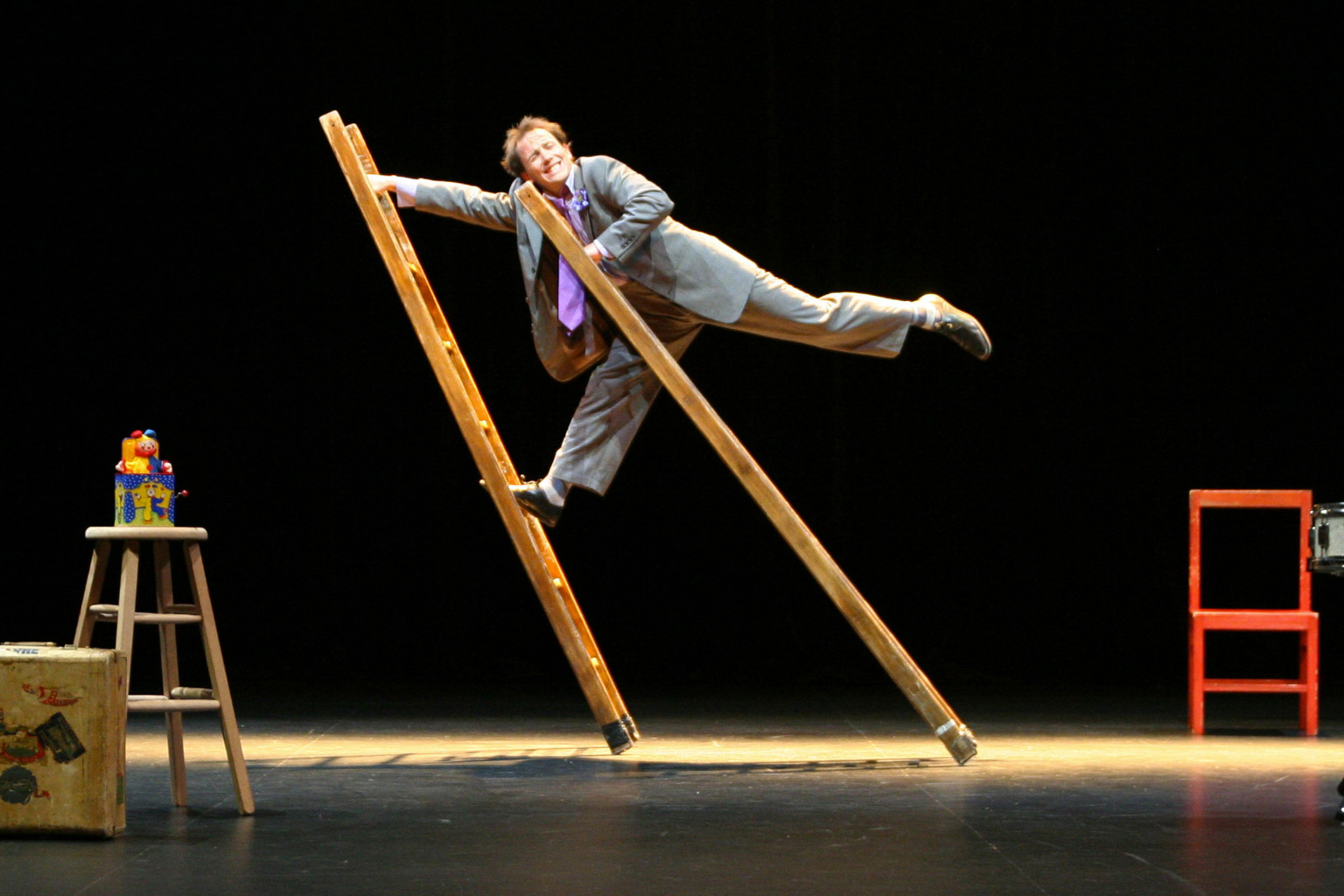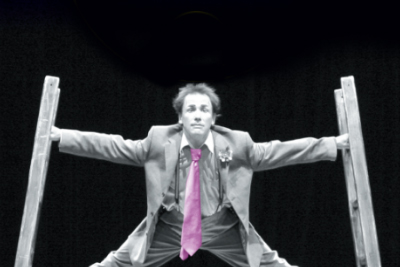Circus Incognitus

Lieu
1 place Charles Dullin 75018 Paris
Capacité 563 sièges
Durée
1 hour
No intermission
Détails
One-man-circus
Perfect for all ages
No dialogue
Highlights: Circus Incognitus
Story: Circus Incognitus
Avis
The man can do everything, he makes both adults and children laugh, he's an acrobat, a clown, a juggler, and tightrope extraordinaire, a breath of fresh air!
Jamie Adkins' one-man marvel of a show blends clowning and vaudeville in ways that are subtle, clever and moving.
A gem of a show for the whole family.
Théâtre de l'Atelier
Théâtre de l'Atelier
Au moment de sa création en 1822, le Théâtre de l’Atelier était situé dans la périphérie agricole de Paris car la ville n’avait alors pas encore commencé à s’étendre et à englober le quartier sinueux de Montmartre. Après leur exécution en 1793, Louis XVI et Marie-Antoinette furent enterrés dans le cimetière voisin. En contrepartie de la remise de ses terres agricoles pour y installer la sépulture royale, Louis XVIII accorde au propriétaire et à son fils l’autorisation non seulement de faire du théâtre dans les modestes salles situées aux portes de la ville, mais aussi d’avoir un contrôle autonome sur le domaine culturel qui explose dans la région. Fort de sa nouvelle autorité, le fermier devenu directeur de théâtre lance avec son fils, comédien en herbe, la construction de nombreux théâtres dans les environs, comme le Théâtre des Mathurins parmi tant d'autres et bien sûr, le Théâtre de l’Atelier.
Suite à la révolution de 1848, la Commune de Montmartre subit de nombreux changements de direction. Le Théâtre devint alors une salle de quartier à grand succès, attirant le grand public qui venait y voir des spectacles populaires, des drames et des vaudevilles Le lieu fut rapidement apprécié et prit vite sa place parmi les somptueuses salles de spectacle le long des Grands Boulevards. Ce qui fut ensuite appelé Le Montmartre fit peau neuve au début des années 1900 et lors de sa ré-ouverture grandiose, un spectacle de Sarah Bernhardt y fut donné. La salle n’a pourtant pas échappé à ce qui arriva à de nombreux théâtres parisiens et devint un théâtre-cinéma au début du XXe siècle. C’était sans compter sur son nouveau directeur, Charles Dullin, qui dans les années 20, décida de changer la fonction du lieu et son nom en référence à sa troupe de théâtre. La salle devint ainsi le Théâtre de l’Atelier. Doté d’un petit bar à l’étage, idéal pour un rafraîchissement ou un encas avant ou après la représentation. Aujourd'hui, le théâtre de l’Atelier est devenu un élément essentiel de la culture bohème du quartier de Montmartre, fréquenté autant par les Parisiens que les touristes.
Infos pratiques Capacité : 563 Accès handicapé : Oui, merci de nous prévenir lors de la réservation en nous envoyant un mail à contact@theatreinparis.com que nous puissions en informer le théâtre afin que celui-ci puisse vous accueillir dans les meilleures conditions. Chauffage : oui Climatisé : non Vestiaire : Oui
FAQ
It says this show has no subtitles. Is it still accessible to English speakers?
The charming clown of Circus Incognitus communicates through movement and gestures rather than with words. It’s different from what we usually offer (French plays with English subtitles) but is still true to Theatre in Paris’ promise: French entertainment accessible to non-French speakers. People from all over the world, no matter their language, can enjoy!
How do I get to the theatre?
The theatre is accessible by the metro stations Anvers (Line 2) and Abbesses (Line 12). Our hotline can be reached in case of difficulty finding the theatre weekdays from 10 am to 7pm Paris time. For details, we invite you to consult the map above.
What do I do when I get to the theatre?
We invite you to arrive 15 minutes before the beginning of the show, and present your voucher at the front desk. The theatre's English-speaking staff members will guide you to your seats.
How long does the show last?
The show lasts one hour with no intermission.
Is it a show for travellers or French people?
Both! After touring across Europe, this delightful performer is eager to cater to both Parisians as well as international audiences, since the show can be understood and enjoyed by anyone.
Is tipping customary?
Tips are not mandatory in Parisian theatres. However, ushers will usually expect a small tip of between 2€ and 5€, which you can give them when they've shown you to your seat. Fun fact: the French word for “tip” is “pourboire,” which literally translates to “to have a drink.”




.png)
.png)
.png)
.png)
.png)
.png)
.png)
.png)
.png)